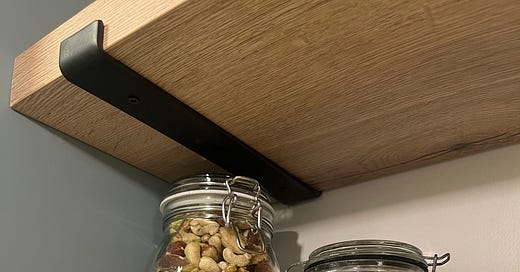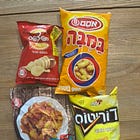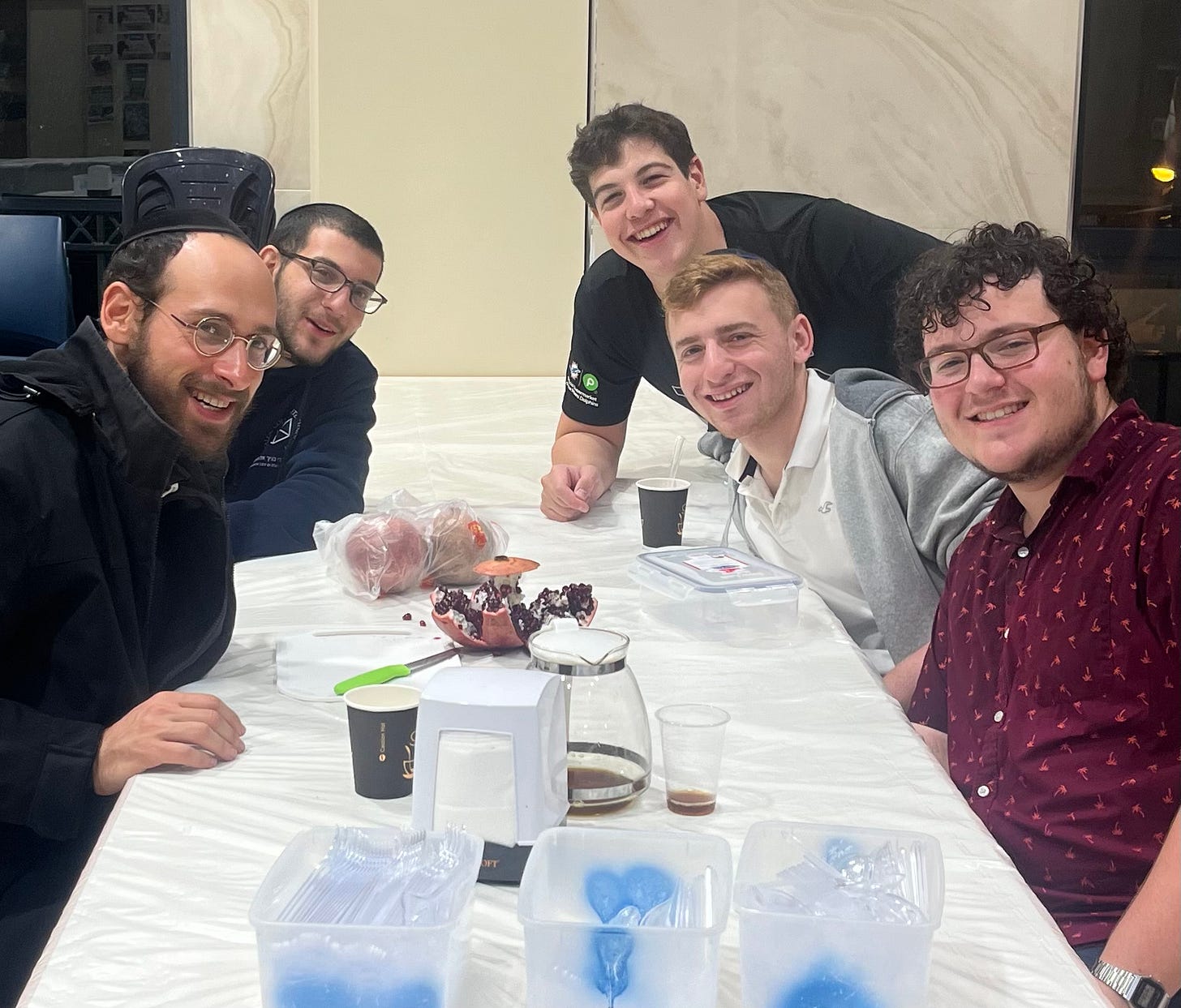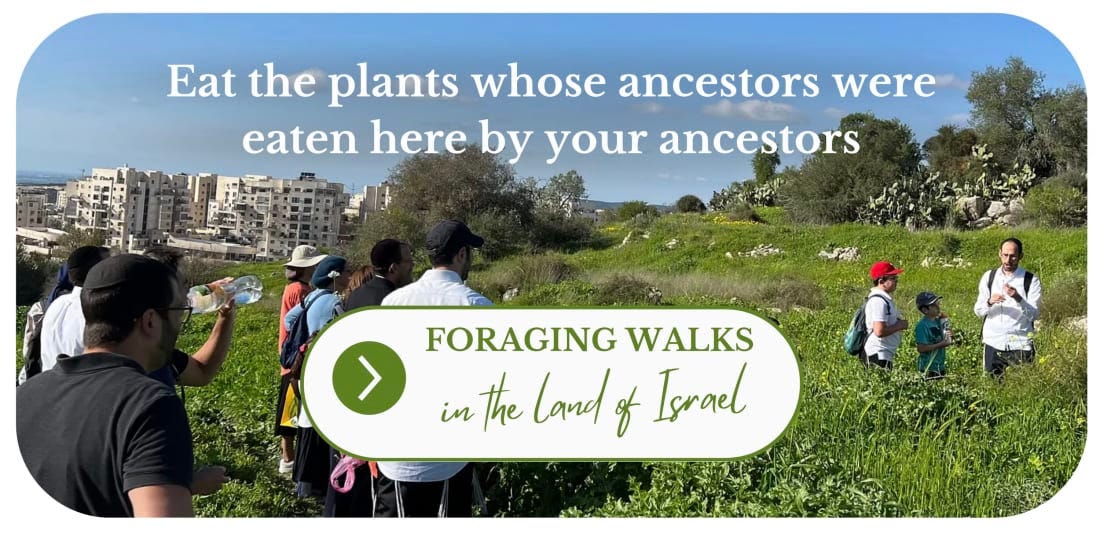Dear Healthy Jew,
We’re not always out on foraging walks in Israel’s natural world, eating directly from God's delicious and nutritious produce. But we can always learn from foraging what type of food to eat: real food that comes from the real world, not food-like substances concocted in a laboratory.
Foraging also role-models a crucial principle of eating well: create a setting that supports eating real food.
As I explained recently, we don’t need (and it’s often not possible) to always eat perfectly healthy food. What’s important is to eat mostly real food, some almost-real food, and maybe an occasional food-like substance.
To do that, we need to become the type of person that intuitively chooses real food, without needing to think about it too much. We need to shop, cook, and stock our kitchens like foraging walks (at least sort of).
If we eat candies and cookies all morning, we probably won’t prepare salad or soup for lunch. We might won’t even have the ingredient on hand.
On the other extreme, eating only organic raw plant foods might break the bank and stress us out, while offering mostly speculative advantages in health and longevity. We also won’t be able to shop in regular stores or eat in most restaurants.
It’s far more realistic and affordable to buy and eat real foods that look like what you’d find on a foraging walk: fruits, vegetables, nuts, seeds, whole grains, legumes, meat and milk. Real foods from the real world, without getting too caught up on the details.
Almost Real Food: Real Food’s Friends
Setting is yet another reason to embrace almost-real foods, such as unflavored potato chips and pretzels: they fit in naturally with completely real foods. Food-like substances, on the other hand, besides being inherently harmful, call for us to eat only more of them.
Consider these examples:
It makes sense to eat French fries together with chicken, rice, and a large vegetable salad.
Falafel, although deep-fried in oil, is made mostly from chickpeas, comes with pita bread (far more real than standard white bread), techina spread (from sesame seeds), and a salad on the side.
But:
A handful of chocolate beans before supper might lead to forget it all and just go for ice cream.
Who’s going to pull out the nuts and seeds after a (processed meat) hot dog in a fluffy bun slathered with ketchup and mustard
Healthy Jew Trail Mix
The first time I joined one of Yeshivas Lev Hatorah’s hikes in Israel’s natural world, I brought along some random nuts and seeds that were sitting around at home, all the simplest, raw variety. I threw in some extra for the guys, and called it Healthy Jew Trail Mix.
Many teenagers think raw nuts and seeds are for birds, but my humble trail mix was the hit of the hike.
So the next trip I brought 5 pounds of the cheapest nuts and seeds I could find, together with a knapsack full of oranges, pomegranates, pomelos, and a few bags of Bamba. (Bamba is a popular peanut based snack in Israel; it’s a classic almost-real food.) Halfway through, it was all gone, much of it devoured by guys who rarely meet a fruit. (Not everyone goes to Healthy Jew class.)
Why?
The setting.
We were far from concrete-and-steel boxes with vending machines stocked with soft drinks and Snicker’s, masses of fast-food shops up the street, and supermarkets filled with frosted cereals.
We were on the trail, surrounded by wild plants and animals, looking up at rocky hills and open canyons. We were part of God’s world, and God’s real food fit right in. God’s sunflower seeds and almonds come unsalted and unroasted, so they’re absolutely delicious in Healthy Jew Trail Mix.
Healthy Jew Class
In our nightly Healthy Jew class at the yeshiva, we work hard to create a setting for balanced, healthy living. That’s no less important than learning the methods and meanings of eating well, moving well, and being well.
We often head out into Israel’s natural world: going “from here to there,” stopping to sit in silence, foraging for whatever is in season, greeting the weather exactly as we find it.
Sometimes I’ll bring in Healthy Jew snacks, which means anything extra that was lying around the house and might be appreciated by Healthy Jewish teenagers. Yes, anything, even food-like substances. Last week I brought Coca-Cola. I kid you not.
Healthy Jewish living includes laughing at the irony of drinking Coke during Healthy Jew class. That’s also part of real food’s setting: embracing the unfortunate reality of food-like substances in the modern world.
One Suggestion: We don’t live on the trail. But we can import God’s world into our city-life by filling our refrigerators and cabinets with real foods.
Thank you for reading Healthy Jew.
Here are 2 great paths to continue the journey:
Also check out this intro and index to explore hundreds of posts about our 3 Healthy Jew topics: Wellness with Wisdom, Land of Life (Israel), and Sensible Spirituality.
Finally, always feel free to reach out here with any comments, questions, or complaints:
I look forward to hearing from you!
Be well,
Rabbi Shmuel Chaim Naiman











A couple of days ago, this healthy Jew found some old raw almonds, left over from last Passover, also laying around in the cabinet in the kitchen. I thought I'd make some "action" out of the find, so I took out my trusty popcorn air popper and roasted them up in a few small batches. Needless to say, all the little ones were eager to see what silliness I was up to and gathered around to watch. In the end they were fighting over them and they had to be rationed to last through Shabbos. The initial complaints that they weren't coated in cartelized sugar melted away and the unadulterated roasted real food filled the little hands and stomachs.